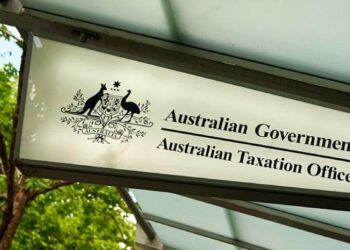In the guidance, released on the ATO website this week, the regulator said an SMSF’s investment strategy should be “your plan for making, holding and realising assets consistent with your investment objectives and retirement goals”.
“It should set out why and how you’ve chosen to invest your retirement benefits in order to meet these goals. The superannuation laws require that you must prepare and implement an investment strategy for your self-managed super fund (SMSF) which you must then give effect to and review regularly,” the regulator said.
The guidance specified that an investment strategy “should be in writing”, and should be “tailored and specific to the relevant circumstances of your fund rather than a document which just repeats the words in the legislation”.
“When formulating your investment strategy, it is not a valid approach to merely specify investment ranges of zero to 100 per cent for each class of investment. You also need to articulate how you plan to invest your super or why you require broad ranges to achieve your investment goals to satisfy the investment strategy requirements,” the ATO said.
The guidance stated that it was important that the fund’s investments remained in accordance with the stated investment strategy, meaning estimated allocations, percentage or dollar ranges for each asset class could be appropriate, but that these should be more specific than “broad investment ranges between zero to 100 per cent in a broad range of assets”.
The regulator also confirmed that trustees were “free to choose” what types of assets their SMSF invested in, provided the investments were permitted by the fund’s trust deed, not prohibited by super laws and met the sole purpose test.
If trustees were to invest the predominant share of their retirement savings in one asset or asset class, the ATO said, the SMSF’s investment strategy should document that the trustees had considered the risks associated with a lack of diversification.
The regulator further warned of the risks of single asset concentration in a leveraged SMSF, stating that “this can expose members to a loss in the value of their retirement savings should the asset decline in value”.
“Super laws also require trustees to invest in accordance with the best interest of all members,” the ATO said.
“You need to be aware of any legal risks that may result from investing in one asset class.”
The guidance specified that trustees should be reviewing their investment strategy “at least annually”, as well as documenting that the review had taken place and any decisions made arising from the review.
“Certain significant events should also prompt you to review your strategy, such as a market correction, when a new member joins the fund or departs a fund and when a member commences receiving a pension,” the ATO said.
Auditor’s role in investment strategy confirmed
In addition, the ATO’s guidance provided further detail on the role of the SMSF auditor in assessing a fund’s investment strategy.
It stated that the auditor needed to check that an investment strategy was in place for the fund that considered the factors stated in SIS Regulation 4.09, that the fund’s investments during the year were in accordance with the strategy, and that the strategy had been reviewed at some point during the year.
“Where you don’t comply with the investment strategy requirements, your auditor may need to notify us about this by lodging an auditor contravention report,” the ATO said.
“Your auditor will only need to lodge an ACR notifying us of the breach if it meets the ACR reporting criteria.
“For most funds, the criteria will be met if either the auditor has identified the same breach in a previous income year and it has been repeated in the current income year, [or if] it is a breach from a previous year that remains unrectified at the time of audit.
“However, the criteria may also be met if the fund is less than 15 months old and the value of any single breach exceeds $2,000.”
If the auditor was required to lodge an ACR and the breach had not been rectified, the ATO would ask the trustee to rectify the breach and could levy a penalty of $4,200 on each trustee.



The ATO is continually using strong arm tactics to prey on vulnerable targets, and has no conscience. We might as well have a totalitarian state… and who does the money belong to anyway as it can be taken out at any time and used in any way.
Overkill, especially when they do not check the multibillion dollar union funds investment strategies that use misleading titles on asset allocations, and conflicted and corrupt inhouse investment managers (refer to IFM’s $12million bonus paid to directors with no explanation and various consulting fees paid to the unions as well as AustSuper’s building project using union labor ending up costing members three times the normal cost and sitting on their balance sheet at that inflated cost price not market value – compare the pair indeed!)
ASIC and ATO apprear corrupt when they penalise the poor average SMSF trustee trying to get ahead and let these criminals pillage and loot to their hearts content.
ASIC, ATO and Industry Super are all best of buddies and full of Left Wing Labor loonies.
ASIC and the ATO will never do anything against Industry Super in case that’s where they go for their next job.
ASIC and the ATO will continue to do the Industry Funds work and attack SMSFs in any and every way possible, regardless of any real problem.
It’s pure politics and it stinks !!!!
Typical BS from ATO. Self managed is the key & while the investment strategy provisions are relevant for where trustees are managong other peoples money (APRA regulated funds) they are not relevant for self managed funds.
The ATO have twisted the prudential provisions of SISA to suit its bias against SMSFs investing in a particular asset class.
The ATO letter bomb to SMSF trustees was a disgrace. It targetted funds with geared property arrangements. If the ATO disagrees with such allocations lets see them test it on court.
They know they could not win that case so instead they use bully boy tactics to impose their views.
Well put
Nice. As Belinda stated at yesterdays SPAA conference – for SMSF trustees the investment strategy is a compliance document.